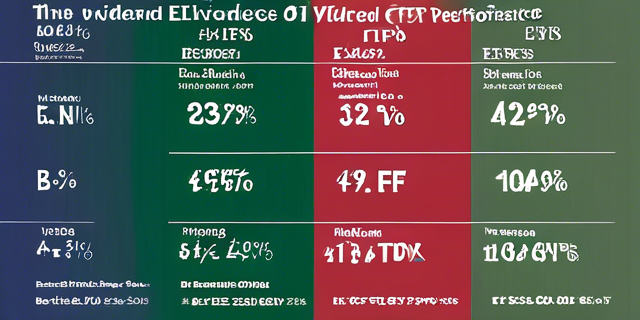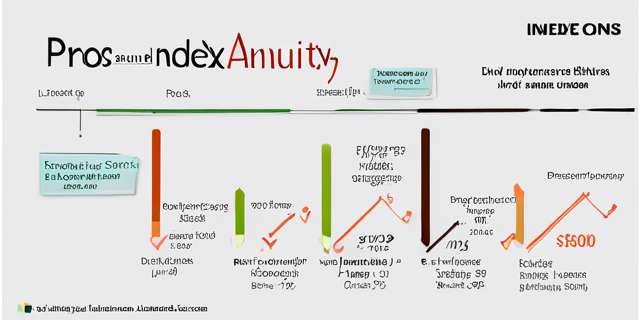REITs that Pay Monthly Dividends to Investors

Real estate investment trusts (REITs) have long been a popular source of dividends for income investors. Most REITs make dividend payments on a quarterly basis. However, some REITs distribute dividends to shareholders each month instead, aligning with the needs of investors who desire more frequent cash flow.
This comprehensive guide explores the world of monthly dividend paying REITs, how their dividend schedule works, the benefits monthly dividends offer, criteria for selecting quality monthly REITs, and detailed examples of specific REITs that make monthly income payouts across the residential, commercial, specialty, and mortgage sub-sectors of the REIT universe.
How Do REIT Dividends Work?
REITs are required to pay out at least 90% of their taxable income annually to shareholders in the form of dividends. This high payout requirement is what produces the relatively high dividend yields that REITs are known for.
Most REITs pay dividends quarterly, in line with the calendar quarters. Some examples of quarterly paying REITs include giants like Realty Income (O), Prologis (PLD), and American Tower (AMT).
However, some REIT choose to pay dividends monthly instead. The aggregate amount of the monthly dividend rate over a year will typically achieve (or exceed) the 90% taxable income distribution requirement.
Monthly REIT dividends allow investors to compound their returns faster through more frequent reinvestment. It also aligns with the needs of investors who desire a steady stream of dividend income.
Benefits of Monthly Dividend REITs
There are several potential advantages to investing in REITs that pay dividends monthly rather than quarterly:
1. More Frequent Compounding
Receiving dividends monthly allows for faster compounding when dividends are reinvested. This accelerates overall returns over long holding periods.
2. Predictable Steady Cash Flow
Monthly dividends provide investors with predictable income payments at regular intervals. This aligns well with funding recurrent expenses.
3. Dollar Cost Averaging
Automatic monthly reinvestment of dividends enables dollar cost averaging into additional REIT shares .
4. High Dividend Yields
Many monthly dividend REITs offer superior dividend yields relative to their quarterly paying peers. More frequent payouts necessitate higher yields.
5. Meet Income Needs
The regular monthly income schedule matches up well with common monthly obligations like rents/mortgages, bills, healthcare costs, etc.
Of course, an investor ultimately must evaluate the investment merits of the specific REIT rather than making decisions solely based on the dividend payment frequency. But the monthly schedule does provide some appealing benefits.
Criteria for Selecting Quality Monthly Dividend REITs

While the monthly dividend schedule is attractive for income investors, the REIT investment still requires thorough due diligence. Focus on REITs demonstrating these positive characteristics:
1. Long Track Record of Operations – Tenure provides proof of concept and stability.
2. Steady Revenue from Top Quality Tenants – Strong tenant covenant lowers risk of cash flow disruption.
3. Consecutive Dividend Increases – Growing dividends evidences ability to sustain payouts.
4. Conservative Payout Ratio near 80% – Lower ratio provides more safety buffer for dividends.
5. Investment Grade Balance Sheet – Lower debt and leverage indicate financial strength.
6. Geographic and Tenant Diversification – Reduces concentration risks of market shocks.
7. Positive Long Term Total Returns – Total return should translate to shareholder value creation.
Applying these criteria helps identify attractively valued, financially sound monthly dividend REITs to research further.
Residential REITs with Monthly Dividends
Residential REITs invest in Class A apartment communities, manufactured housing, single family rental homes, student housing complexes and senior living facilities. Several examples include:
Camden Property Trust (CPT)
- Owns interests in and operates over 160 high-quality multifamily apartment communities across the US.
- Has paid and grown monthly dividends for over 15 years.
- Current dividend yield around 3%.
Equity Residential (EQR)
- The largest publicly traded apartment REIT in the US. Portfolio includes over 70,000 apartment units concentrated in urban coastal markets.
- Monthly dividend currently yields over 4%.
Independence Realty Trust (IRT)
- Focused on owning Class A multifamily apartment properties throughout non-gateway markets in the US.
- Pays monthly dividend yielding approximately 4%.
American Homes 4 Rent (AMH)
- Primarily invests in single family homes for rent in attractive growth markets in the US.
- Pays a monthly dividend yielding around 2%.
Commercial REITs with Monthly Dividends
Commercial REITs invest in office buildings, shopping malls, hotels, warehouses, data centers, cell towers and other income-generating commercial property. Some examples:
Spirit Realty Capital (SRC)
- Diversified commercial REIT that owns retail, industrial, office and other property leased on a triple-net basis.
- Current dividend yield around 6% paid monthly.
STORE Capital (STOR)
- Owns and manages a substantial portfolio of single-tenant operational real estate leased to retailers.
- Pays a monthly dividend yielding approximately 5%.
Whitestone REIT (WSR)
- Focused on owning and operating community focused open air shopping centers in highly populated markets.
- Monthly dividend yields around 5% currently.
National Retail Properties (NNN)
- One of the largest publicly traded triple-net lease REITs. Primarily invests in high quality retail properties leased to tenants under long-term leases.
- Current monthly dividend yields approximately 4%.
Mortgage REITs with Monthly Dividends
Mortgage REITs originate loans and invest in mortgages and mortgage-backed securities to generate income from net interest margins. Some examples with monthly dividends include:
ARMOUR Residential REIT (ARR)
- Invests mainly in residential mortgage-backed securities issued or guaranteed by government agencies.
- Focus on high quality agency-backed securities provides safety.
- Dividend currently yields over 13% monthly.
Cherry Hill Mortgage (CHMI)
- Focuses on acquiring, financing, and managing residential mortgage assets sourced from government agencies like Fannie Mae and Freddie Mac.
- Monthly dividend yields around 12%.
AG Mortgage Investment Trust (MITT)
- Invests in agency and non-agency residential and commercial mortgage assets including mortgage-backed securities.
- Offers diversified mortgage bond exposure with a 11%+ monthly dividend.
Chimera Investment Corporation (CIM)
- Portfolio includes investments across mortgage-backed securities, residential whole loans, and other real estate related securities.
- Pays an attractive 10%+ monthly dividend.
Specialty REITs with Monthly Dividends
Beyond traditional property sectors, some REITs focus on specialty niches. Examples paying monthly include:
EPR Properties (EPR)
- Specializes in entertainment venues like megaplex theaters, ski resorts, water parks, and attractions. Also invests in experiential education properties.
- Offers a high monthly dividend currently yielding over 7%.
STAG Industrial (STAG)
- Owns and operates light industrial buildings including warehouses, distribution centers, light manufacturing facilities and flex spaces.
- Pays a monthly dividend yielding around 4%.
Sabra Health Care REIT (SBRA)
- Focused on owning skilled nursing facilities, senior housing communities and specialty medical facilities like hospitals throughout the US.
- Yields over 8% paid monthly.
Iron Mountain (IRM)
- Best known for document storage, information management and secure shredding services. Also owns and operates data centers.
- Monthly dividend yields approximately 5%.
Diversifying Across Monthly Dividend REITs
Since different property sectors perform differently across market cycles, investors should aim to diversify across multiple monthly dividend REITs rather than concentrating too heavily in just one or two names.
Allocating among a basket of monthly payers across residential, commercial, specialty and mortgage REITs provides balance. This helps mitigate the risks of any single company cutting dividends or experiencing cash flow issues.
Further diversifying within each sector by market, property type, tenant mix and geographic concentration also reduces risk. Combining REITs with other income generating assets further diversifies the income stream.
Accessing Monthly Dividend REITs
Investors looking to invest in monthly dividend REITs have a few options:
Individual REIT stocks – Investors can buy shares of individual REITs through a brokerage account to customize their portfolio.
REIT ETFs – Some REIT ETFs like SCHH and MORT own a basket of REIT stocks and pay monthly dividends.
REIT mutual funds – Funds like Cohen & Steers Real Estate Securities also hold diversified REIT portfolios while paying monthly distributions.
Direct ownership of individual REITs allows selecting specific companies but requires research. Funds provide diversification but have fees. Overall, REITs can provide reliable monthly dividends to help investors meet their ongoing cash flow needs.
Conclusion
REITs that pay consistent monthly dividends align well with income investors who desire regular cash flow. Compared to traditional quarterly dividend REITs, monthly payers offer more frequent compounding and predictable income payments. When constructing a REIT portfolio focused on monthly income, be sure to conduct thorough due diligence and apply selection criteria that identifies financially strong REITs with stable long term cash flows. Diversify holdings across multiple REIT sectors and property types while avoiding overconcentration. Pairing REITs with other income generating assets further diversifies the income stream. For income-oriented investors, especially retirees, REITs that pay dividends each month can play an instrumental role in portfolio strategies structured around meeting recurring cash flow needs.
Frequently Asked Questions
How are REIT dividends taxed?
REIT dividends are taxed as ordinary income and do not qualify for lower capital gains tax rates. Investors pay income tax on REIT dividends when received.
What is a reasonable portfolio allocation to monthly dividend REITs?
Most experts suggest limiting REITs to 10-20% of an investment portfolio. REITs providing monthly dividends could occupy a portion of the overall REIT allocation based on an investor’s income needs.
Are monthly dividend REITs riskier than quarterly dividend REITs?
Not necessarily. The total return potential, balance sheet, cash flows, dividend safety and other fundamentals determine risk more than payment frequency. However, very high yields above 10% may indicate elevated risks.
How do investors reinvest monthly REIT dividends?
Investors can enroll in a dividend reinvestment program (DRIP) to automatically reinvest monthly dividends into fractional shares commission-free rather than receiving cash payouts.
What is the benefit of REIT funds over owning REIT stocks directly?
REIT mutual funds and ETFs provide instant diversification in a passively managed, low-cost structure. But investors sacrifice control over selecting specific REITs optimized for their strategy.









